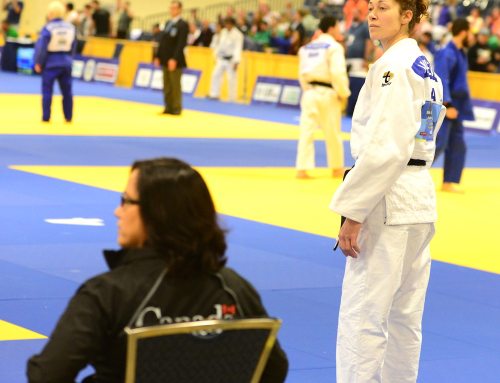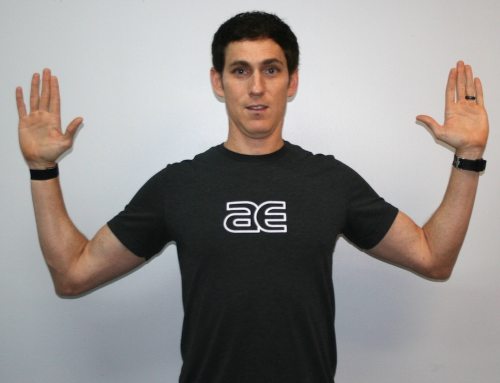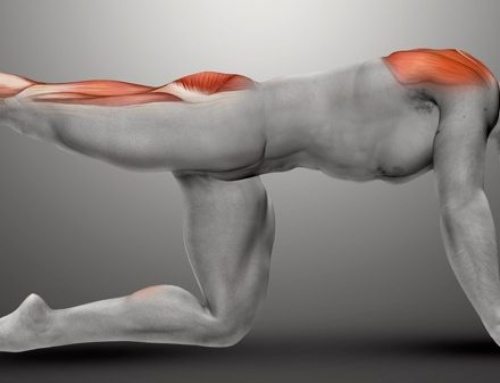
Over-Reaching versus Over-Training: Gaining the Benefits, but Avoiding the Pitfalls
By Alex McDonald, MD
Every athlete has and will experience periods of fatigue throughout their athletic career, regardless of whether they are a professional athlete training 30 hours a week or a busy professional trying to squeeze in a lunch time workout. When there is an imbalance between training and recovery, exercise and exercise capacity, and stress and/or stress tolerance, overtraining is often the result (1). Endurance athletes are particularly vulnerable to overtraining. Unfortunately, due to differences of opinion amongst exercise physiologists, lack of well-designed studies, and poor topic definitions, most people hold a relatively limited understanding of the subject matter and its nuances.
What is Overtraining?
Overtraining results when stress, from both training and nontraining stressors, overwhelms the body’s ability to recover adequately (2). There are two different well-recognized forms of overtraining, Short-Term Overtraining (STO) and Long-Term Overtraining (LOT). An important point to understand is that the physiologic stress of training does not exist in a vacuum. Training stress is in addition to the numerous other stressors that affect a person, such as work, family commitments, financial stress, etc. Therefore, when thinking about training stress and overtraining, all of life’s stressors must be balanced against an athlete’s ability to recover.
STO or “over reaching” is a condition of peripheral fatigue that may last a few days to a few weeks and is readily reversible. STO is associated with fatigue, reduction or stagnation of lactate threshold performance capacity, reduction of maximum performance capacity, and competitive ineffectiveness (1). LTO is a condition of both peripheral and central fatigue. It has many of the same symptoms as STO, but it can last for weeks or months, and some physiologists believe it can last for years, a condition known as Chronic Fatigue Syndrome (CFS). STO can develop into LTO, which is more difficult to recover from, especially if an athlete does not correct the stress imbalance that has caused STO (1).
Symptoms
The clinical symptoms associated with overtraining can be divided into the sympathetic and parasympathetic types (1, 2), based upon the predominance of symptoms. Sympathetic symptoms are those of excitation and restlessness, whereas parasympathetic symptoms include apathetic behavior and inhibition. The parasympathetic form of overtraining is far more common in endurance athletics.
Athletes may present with various signs and symptoms of short-term overtraining, over reaching, and long-term overtraining, however, some commonalities exist. Examination of heart rate can be an indication of stress on the body (1). When an athlete approaches an overtrained state they may have an elevated resting heart rate. Additionally, in workout, heart rate variability may be decreased and an athlete may not be able to elevate their heart rate (3). Physiologists believe this may be a protective mechanism that helps the body to prevent further injury when already in a compromised state.
When overtrained, athletes often feel as if their muscles are heavy or overloaded, regardless of the amount of time spent warming up. This may be a result of additional fluid being shifted to the muscles in an effort to clear by-products of exercise and tissue damage. Delayed Onset Muscle Soreness (DOMS) is a very common symptom of tissue damage that occurs 24-60 hours post exercise. However, in an overtrained state, this soreness may persist for prolonged periods of time, even after light exercise (1).
There is also a less well-defined psychological component to both short and long-term overtraining. Often athletes report feeling “stale,” both physically and mentally tired. There may also be mood disturbances or changes that are often noticed by friends and family long before an athlete is aware of them. These changes may be a result of various changes in neurotransmitters that may develop in the face of overtraining (4, 5). Lastly, for some athletes eating habits and sleep habits can be altered which may contribute to changes in body weight, often weight loss.
The above mentioned symptoms are ubiquitous in the athletic community. There are times when an athlete is fatigued and needs to train through that fatigue in order to gain fitness. Concern for pushing the body into an irreversible over trained state need only arise when a combination of these symptoms persists for three to five days. There is a delicate balance between STO/overreaching and LTO. Overreaching is a frequently employed method to build fitness and help an athlete reach their training potential (which should only be done with the unbiased perspective of a coach.) The ability of an athlete to recover and rebound from STO is a good indicator of the stress balance in their life. A good indication of going too far with their training is when this rebound is impaired.
The Science Behind Overtraining
The precise mechanism of overtraining is unknown. The syndrome and its clinical manifestation can best be explained as a stress response (2). There are many theories, yet for numerous reasons the condition is very difficult to study, in part because there is a huge spectrum and no clear indication in any specific individual of what specifies short-term and what specifies long-term overtraining. This makes many of the studies on overtraining very difficult to interpret, because some claim that much of the research conducted on athletes with STO syndrome are not long-term enough (6). Regardless of these pitfalls there is some information that has been determined and is worth examining, although it must be done with a critical eye.
The sense of staleness that many LTO athletes begin to experience is believed to be a dysfunction of the neuroendocrine system, localized at the hypothalamic level. The neuroendocrine system is a highly complex organization of hormones, neurotransmitters, nerve cells, portions of the brain and various other parts of the body that affects nearly every organ system in the body as well as many global functions. The central control for the neuroendocrine system is a portion of the brain called the hypothalamus. Several hormones and neurotransmitters, namely Growth Hormone (GH), cortisol and Adrenocorticotropic Hormone (ACTH) have been found to be low in individuals who may be over trained, indicating a hypothalamic dysfunction (5). There have also been studies which show minimal changes in hormone levels themselves, but a decrease in sympathetic activity, which may reflect a central nervous system cause of an overtrained state (7).
Much of this research has given rise to attempts to be able to accurately and quickly detect a state of overtraining to allow athletes to better walk the fine line between STO (resulting in improved athletic performance) and LTO. Many potential markers of overtraining, e.g. anemia (low red blood cell count), leucopenia (low white blood cell count), iron deficiency, reduced serum protein, glucose, triglyceride, triglyceride-rich cholesterol, free fatty acid, increased plasma norepinephrine levels, bio markers of oxidative stress and decreased basal catecholamine (stimulating neurotransmitters) excretions, have had poor results when trying to determine if any would be objective and reliable markers for an athlete on the edge of overtraining (1, 2, 8, 9). At present there is no adequate test to prevent or diagnose overtraining (2).
Keep in mind that although there are numerous studies on the causes of overtraining, many of them have conflicting data or data that cannot be readily compared due to different characteristics of athletes and measures of study endpoints (6). Regardless of the causes of overtraining, it is clear that it results when total bodily stress exceeds the individual coping capacity (2).
Risk Factors
Although the causes of overtraining are debatable, the risk factors that lead to the root causes of overtraining are better understood. They include:
- Training too much, too soon (follow the “10% rule”: do not increase your training volume by more than 10% from one week to the next or without taking adequate rest weeks).
- Incorporating too much high intensity work into a training week or a single day. For example, combining two high intensity variables into one training session, such as performing hill repeats in the middle of a long run, or completing 2 or 3 high intensity lactate threshold sets in a week
- Not incorporating adequate rest periods into a training plan
- Poor recovery habits, such as inadequate sleep or poor nutrition
- Balancing too many stressors outside of training
If an athlete’s training occasionally fits into the examples above or fits into one or two of them only, then the likelihood of slipping into an overtrained state is relatively low. However, as more risk factors are added, the chances of overtraining increase. The bottom line is that inadequate recovery and/or increased volume of training at a high-intensity level is most likely the common cause of overtraining (1).
Recommended Treatment & Guidelines
The treatment for overtraining is rest. LTO requires complete recovery and can take weeks to months (1) and some believe possibly years in the case of chronic fatigue syndrome. It may take months to regain fitness that is lost during this period.
The goal of many athletes is to occasionally have their training result in over-reaching but never to the point of LTO. Determining where this line is can be very difficult, in part because of variability between athletes as well as variability within a single athlete from year to year and even within a single season. The line between overreaching and long-term overtraining is in a constant state of flux and very difficult to accurately pinpoint. As a result many athletes, coaches and exercise physiologists take steps to gain a little extra insurance to make sure they do not cross that line. That is not to say that following some of the guidelines suggested below will prevent overtraining; only a well organized and athlete-specific plan can accomplish that. The following are simply some extra easy ways to give added insurance to make sure an athlete does not slip:
- Glutamine is a branched chain amino acid that is an important fuel for cells of the immune system. Some studies have found that plasma glutamine concentrations were decreased in over trained athletes and after long-term exercise. Branched chain amino acid supplementation during long-term exercise was shown to prevent this decrease in the plasma glutamine level. However, it is not clear whether glutamine supplementation may prevent overtraining or that low levels may simply be a result of overtraining. That being said supplementing with glutamine or foods rich in glutamine after a long or hard training session may help to ward off overtraining, or at the very least bolster the immune system (10).
- An athlete’s diet is an important source of recovery and in particular protein has been shown to be an important component to prevent long-term overtraining. There are physical and psychological differences among athletes that could put them at greater need than other healthy persons (11). Additionally the timing of this protein intake is important as well, particularly post-workout. Education as well as a consultation with a sports nutritionist may be an important way to prevent overtraining (11).
- Lastly the most important piece of the entire puzzle is to know your individual body and be aware of over-reaching and long-term overtraining symptoms. It is ok to over-reach a few times throughout a training year. However, it is important to recognize it and take the necessary steps to recover, completely rest for a day or two followed by a few days of light activity. If symptoms persist or reoccur within a few weeks, it may be time to tone down your training plan and allow your body to fully rest and recover. Additionally if symptoms are severe or do not improve with rest, consulting a sports medicine specialist or healthcare provider is recommended.
Conclusion
Overreaching and LTO are poorly understood and there is a significant amount of mixed data on the subject (6). However, these syndromes can be controlled to ensure that there is a well thought out and organized training plan that is appropriate for the athletes’ abilities, both physically as well as appropriate for their lifestyle. An athlete should always be aware of the early signs and symptoms of overtraining as well as focus on the “details of recovery,” including proper nutrition, hydration, sleep and limiting other stressors. This is of utmost importance during a recovery week or day. Remember to never compromise recovery for another hard session. The key to athletic improvement is gradual progressive training stress and recovery.
Alex M. McDonald, MD is a professional triathlete, First Endurance Research Board Member, and endurance coach at Fast Forward Triathlon. Alex’s professional interests lie in coaching endurance athletes, sports medicine and exercise physiology. He obtained his MD degree from the University of Vermont. Prior to medical school, Alex graduated from Connecticut College with an emphasis on both the biological and social sciences. He currently trains and lives, with is wife and daughter, in Durham, NC. He can be reached on twitter at @alexmmtri, or at www.alexmmtri.com.
Republished with permission from PowerBar.com
References:
(1) Lehmann M, Foster C, Keul J,. Overtraining in endurance athletes: a brief review. Physical Fitness and Performance, Medicine & Science in Sports & Exercise. 25(7):854-862, July 1993.
(2) Kuipers H, Keizer HA. Overtraining in elite athletes. Review and directions for the future. Sports Med. 1988 Aug;6(2):79-92.
(3) Baumert M, Brechtel L, Lock J, Hermsdorf M, Wolff R, Baier V, Voss A. Heart rate variability, blood pressure variability, and baroreflex sensitivity in over trained athletes. Clin J Sport Med. 2006 Sep;16(5):412-7.
(4) Ishigaki T, Koyama K, Tsujita J, Tanaka N, Hori S, Oku Y. Plasma leptin levels of elite endurance runners after heavy endurance training. J Physiol Anthropol Appl Human Sci. 2005 Nov;24(6):573-8.
(5) Barron JL, Noakes TD, Levy W, Smith C, Millar RP. Hypothalamic dysfunction in over trained athletes. J Clin Endocrinol Metab. 1985 Apr;60(4):803-6.
(6) Halson S, Jeukendrup A,. Does Overtraining Exist?: An Analysis of Overreaching and Overtraining Research. Review Article. Sports Medicine. 34(14):967-981, 2004.
(7) Lehmann M, Gastmann U, Petersen KG, Bachl N, Seidel A, Khalaf AN, Fischer S, Keul J. Training-overtraining: performance, and hormone levels, after a defined increase in training volume versus intensity in experienced middle- and long-distance runners.
Br J Sports Med. 1992 Dec;26(4):233-42.
(8) Gastmann U, Petersen KG, Böcker J, Lehmann M. Monitoring intensive endurance training at moderate energetic demands using resting laboratory markers failed to recognize an early overtraining stage. J Sports Med Phys Fitness. 1998 Sep;38(3):188-93.
(9) Margonis K, Fatouros IG, Jamurtas AZ, Nikolaidis MG, Douroudos I, Chatzinikolaou A, Mitrakou A, Mastorakos G, Papassotiriou I, Taxildaris K, Kouretas D. Oxidative stress biomarkers responses to physical overtraining: implications for diagnosis. Free Radic Biol Med. 2007 Sep 15;43(6):901-10. Epub 2007 May 23.
(10) Parry-Billings M, Budgett R, Koutedakis Y, Blomstrand E, Brooks S, Williams C, Calder P.C, Pilling S, BaigrieR, Newholme E. A., Plasma amino acid concentrations in the overtraining syndrome: possible effects on the immune system. Med. Sci. Sports Exerc., Vol. 24, No. 12, pp. 1353-1358, 1992.
(11) Lowery L, Forsythe C. E., Protein and Overtraining: Potential Applications for Free-Living Athletes, Journal of the International Society of Sports Nutrition 2006, 3:42-50 (5 June 2006)





